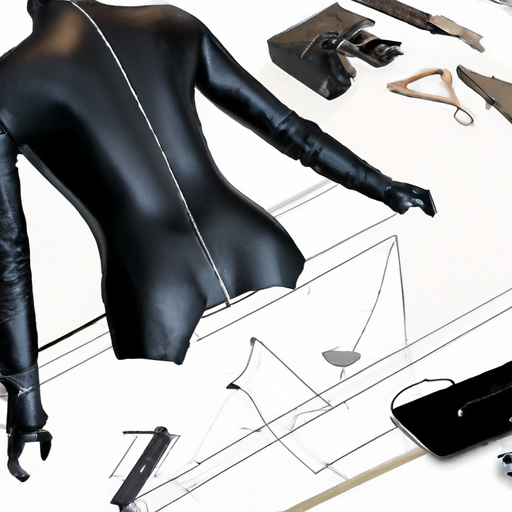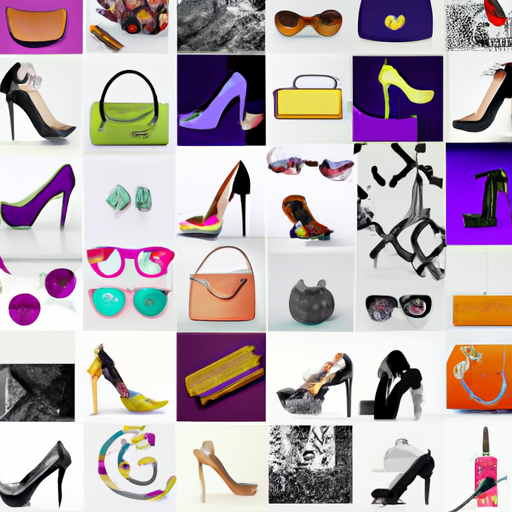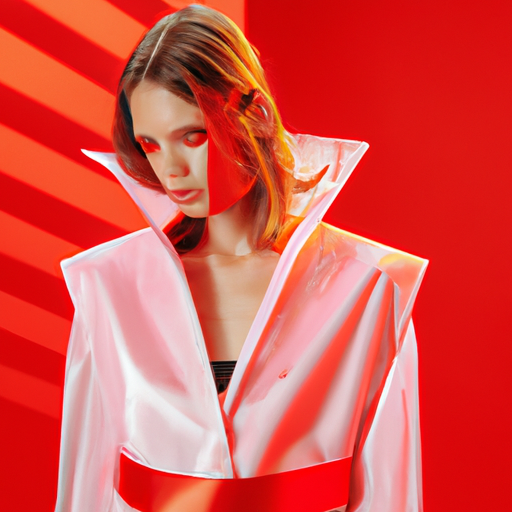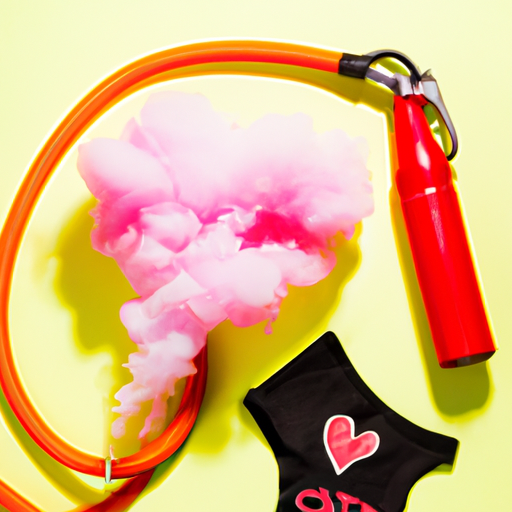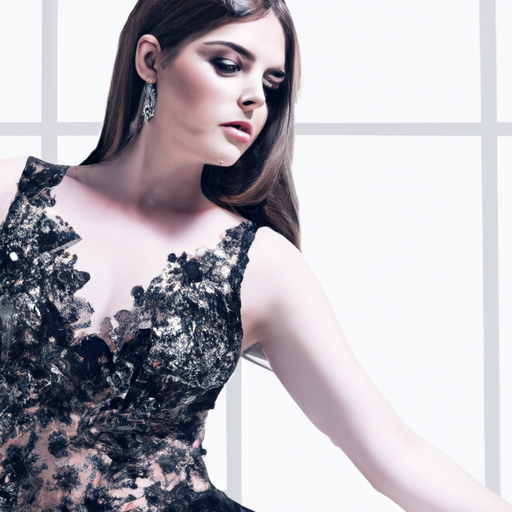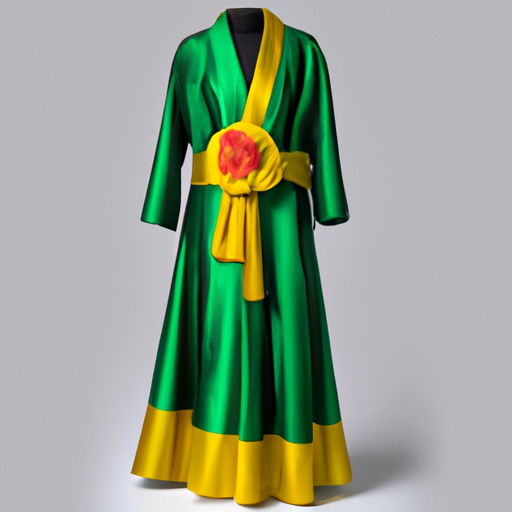Future Fashion Trends 2030
Imagine stepping into the fashion world of 2030, where innovation, sustainability, and technology collide to create a whole new level of style. In this article, we will explore the exciting predictions for fashion trends in the not-so-distant future. From smart fabrics that adapt to your body’s needs to virtual reality fashion shows, get ready to be immersed in a world of fashion-forward thinking and trendsetting. Let’s dive into the amazing possibilities that await us in the future of fashion.
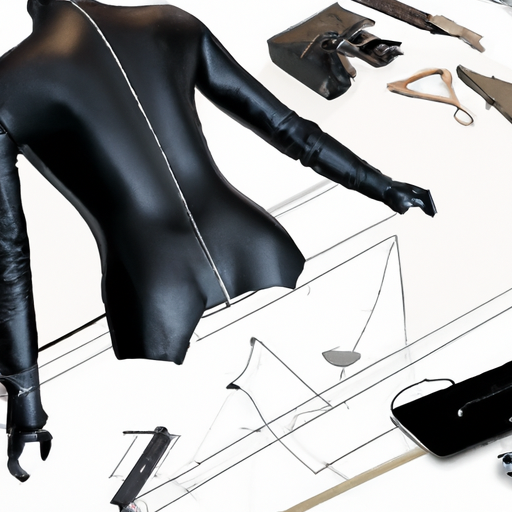
Table of Contents
Sustainable Fabrics
Sustainability has become a key consideration in the fashion industry, and one of the most prominent ways to achieve this is through the use of sustainable fabrics. These materials are produced in an environmentally friendly manner, minimizing their impact on the planet. In recent years, there has been significant progress in the development of sustainable fabrics, particularly in the areas of biodegradable materials, recycled fabrics, and lab-grown textiles.
Biodegradable Materials
Biodegradable materials are fabrics that can decompose naturally and break down into organic matter without causing harm to the environment. These materials offer a more sustainable alternative to traditional synthetic textiles, such as polyester, which can take hundreds of years to decompose. Some examples of biodegradable materials include organic cotton, hemp, and bamboo. These materials not only have a lesser impact on the environment during their production but also degrade quicker, reducing the amount of waste generated by the fashion industry.
Recycled Fabrics
Recycled fabrics are made from post-consumer and post-industrial waste, reducing the need for raw material extraction and minimizing the amount of waste that goes to landfills. Commonly known as upcycled or repurposed fabrics, they involve converting discarded garments, plastic bottles, and other materials into new textiles. This process reduces the consumption of water, energy, and other resources required for the production of virgin materials. Recycled fabrics not only contribute to waste reduction but also encourage a circular economy in the fashion industry.
Lab-grown Textiles
Lab-grown textiles, also referred to as cultured or biofabricated materials, are produced using advanced scientific techniques. These fabrics are created by growing fibers or cells in a controlled laboratory setting rather than relying on traditional agricultural or animal-based sources. Lab-grown textiles offer a sustainable alternative to conventional materials like silk or leather, which often involve ethical concerns and environmental impacts. By developing textiles in labs, it is possible to reduce the reliance on natural resources and minimize pollution associated with textile production.
Circular Fashion
Circular fashion revolves around creating a closed-loop system where garments and materials are reused, recycled, or repurposed, ensuring that they have a longer lifespan and a reduced impact on the environment. This approach aims to eliminate waste and reduce the need for constant production of new clothing. The concept of circular fashion is gaining momentum, and there are several strategies being implemented to achieve this goal, including pre-owned and rental markets, clothing swapping platforms, and zero waste production.
Pre-owned and Rental Markets
Pre-owned and rental markets allow consumers to access garments without the need for new production. Pre-owned markets involve the buying and selling of second-hand clothing, offering a sustainable way to extend the life cycle of garments. Rental markets, on the other hand, offer temporary access to clothing items, enabling consumers to enjoy fashion without the need for long-term ownership. Both options contribute to reducing waste by promoting the reuse of garments and minimizing the need for new production.
Clothing Swapping Platforms
Clothing swapping platforms provide an avenue for individuals to exchange their garments with others. By swapping clothes, consumers can refresh their wardrobes without adding to the demand for new clothing items. These platforms encourage a sharing economy and promote sustainability by reducing the consumption of new garments. Additionally, clothing swaps can foster a sense of community and expand fashion choices by allowing individuals to access different styles and brands.
Zero Waste Production
Zero waste production involves designing and producing garments in a way that minimizes textile waste throughout the entire production process. This approach focuses on reducing or eliminating textile waste at each stage, including fabric cutting, pattern-making, and post-production. Techniques such as pattern efficiency, fabric recycling, and utilizing leftover fabric scraps are employed to ensure that no materials go to waste. Zero waste production not only helps conserve resources but also promotes sustainable practices in the fashion industry.
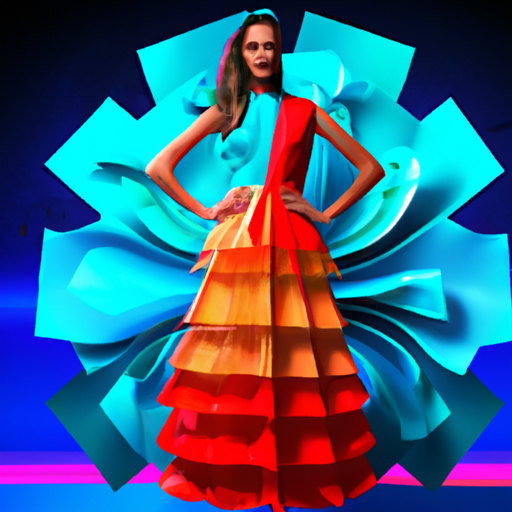
Smart Clothing
Technology has permeated almost every aspect of our lives, and the fashion industry is no exception. Smart clothing refers to garments integrated with electronic components or wearable technology, bringing functionality and interactivity to our everyday outfits. This trend has the potential to revolutionize the way we dress and enhance our overall clothing experience. Smart clothing encompasses various aspects, including interactive fabrics, smart wearable technology, and intelligent climate regulation.
Interactive Fabrics
Interactive fabrics are textiles embedded with sensors, actuators, or other electronic components that respond to external stimuli. These fabrics can change color, texture, or shape based on different factors such as temperature, touch, or sound. For example, a dress made of interactive fabric could change color depending on the mood of the wearer or the surrounding environment. Interactive fabrics not only offer new possibilities for self-expression but also enable increased functionality and personalization in our clothing choices.
Smart Wearable Technology
Smart wearable technology refers to electronic devices that can be worn on the body, usually in the form of accessories or garments. These devices often incorporate sensors, connectivity, and data processing capabilities to provide various functionalities. Examples of smart wearable technology include smartwatches, fitness trackers, and even augmented reality glasses. These technologies allow users to track their health, monitor their activity levels, and access information right at their fingertips. Smart wearable technology combines fashion and functionality, enabling users to stay connected and informed while seamlessly integrating technology into their everyday lives.
Intelligent Climate Regulation
While our clothing has always offered protection from the elements, intelligent climate regulation takes it a step further by actively adjusting to the wearer’s needs. This technology utilizes sensors to monitor factors such as temperature, humidity, and body heat, and then adjusts the clothing’s properties accordingly. For instance, a jacket equipped with intelligent climate regulation technology can automatically cool or heat the wearer, providing optimal comfort in different weather conditions. This innovation ensures that individuals can stay comfortable and adapt to changing environments, making it particularly useful in extreme climates or during outdoor activities.
Virtual and Augmented Reality in Fashion
Virtual and augmented reality technologies have the potential to transform the way we experience fashion. These technologies offer immersive and interactive experiences that bridge the gap between the physical and digital worlds. In fashion, virtual reality is being used for virtual fashion shows, virtual fitting rooms, and enhanced retail experiences.
Virtual Fashion Shows
Virtual fashion shows allow designers to showcase their collections in a digital environment, eliminating the need for physical venues and reducing the carbon footprint associated with traditional fashion shows. These virtual experiences can be accessed by a global audience, democratizing the fashion industry and making it more accessible to a wider range of people. Virtual fashion shows also open up new creative possibilities, enabling designers to experiment with digital effects, animations, and special effects that may not be feasible in traditional runway shows.
Virtual Fitting Rooms
Virtual fitting rooms use augmented reality technologies to enable consumers to try on clothes digitally. By using a camera or smartphone, individuals can virtually “try on” different garments and see how they would look on them before making a purchase. This technology helps reduce the need for physical try-ons, minimizing the environmental impact associated with the production and transportation of clothing. Virtual fitting rooms also enhance the convenience and efficiency of the shopping experience, allowing individuals to browse and try on a wide range of garments without leaving their homes.
Enhanced Retail Experience
Virtual and augmented reality can also be used to enhance the overall retail experience. Virtual reality technologies can create immersive shopping environments, where individuals can explore virtual stores and interact with products as if they were physically present. Augmented reality, on the other hand, can overlay digital information or virtual objects onto the real-world environment, providing additional product details, customization options, or styling suggestions to enhance the shopping experience. These technologies transform the way we shop, blending the physical and digital realms to create an engaging and personalized retail experience.
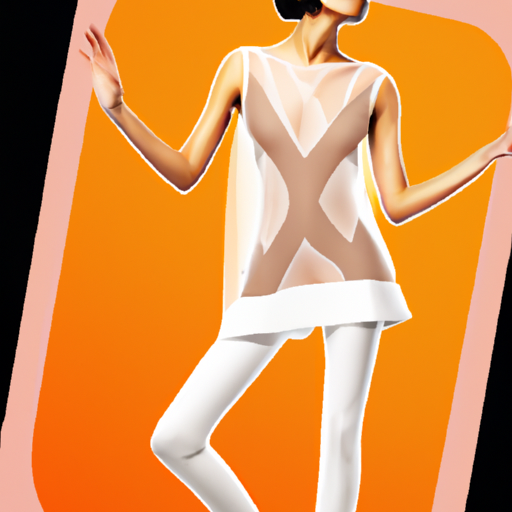
Gender Fluid Fashion
Gender fluid fashion challenges traditional gender norms and embraces a more inclusive and diverse approach to clothing. This trend aims to break down the barriers between male and female fashion, allowing individuals to express themselves freely regardless of societal expectations. Gender fluid fashion encompasses various aspects, including unisex designs, inclusive sizing, and gender-neutral fashion campaigns.
Unisex Designs
Unisex designs refer to clothing that is not specifically targeted at one gender but can be worn by individuals of any gender. Unisex clothing often features neutral colors, minimalist silhouettes, and versatile styles that can be easily adapted to different body types. By blurring the lines between gender-specific fashion categories, unisex designs encourage self-expression and give individuals the freedom to wear what makes them comfortable and confident.
Inclusive Sizing
Inclusive sizing involves offering a wide range of sizes to accommodate diverse body shapes and sizes. Traditionally, the fashion industry has focused on a narrow range of body types, often neglecting individuals who do not fit within these limited standards. Inclusive sizing aims to address this issue by providing clothing options that cater to a broader range of people. By embracing inclusive sizing, fashion brands can promote body positivity, increase accessibility, and ensure that everyone can find clothing that fits and flatters their unique body.
Gender-neutral Fashion Campaigns
Gender-neutral fashion campaigns promote inclusivity and diversity by showcasing individuals of all genders wearing the same styles and designs. These campaigns challenge traditional beauty standards and redefine societal expectations surrounding gender and fashion. By featuring a diverse range of models, regardless of their gender identity, fashion brands can inspire individuals to feel confident and comfortable expressing their own unique style. Gender-neutral fashion campaigns encourage individuals to embrace their individuality and celebrate the fluidity of fashion.
Tech-Infused Accessories
Accessories have always played a significant role in fashion, complementing and enhancing our outfits. With the integration of technology, accessories now have the ability to provide additional functionalities and connectivity. Tech-infused accessories include smart jewelry, wearable gadgets, and digital accessories.
Smart Jewelry
Smart jewelry combines fashion and technology, offering wearable devices that can track various aspects of our lives. These accessories often incorporate sensors that monitor heart rate, activity levels, and sleep patterns, providing individuals with insights into their health and wellness. Smart jewelry can also serve as a fashion statement, allowing users to express their personal style through innovative and technologically advanced designs. From smart rings to fitness trackers disguised as bracelets, these accessories cater to both aesthetic and practical needs.
Wearable Gadgets
Wearable gadgets encompass a wide range of technology-infused accessories that can be worn on the body. These gadgets often provide additional functionalities beyond traditional accessories, including GPS tracking, music playback, and even contactless payment capabilities. Wearable gadgets can be integrated into clothing items, such as smartwatches or fitness bands, or worn as standalone accessories like smart glasses or smart belts. These devices enhance convenience and accessibility, allowing individuals to stay connected and informed while on the go.
Digital Accessories
Digital accessories refer to accessories that utilize digital technology to enhance their functionality and aesthetics. Examples include handbags with built-in charging ports for mobile devices, scarves with integrated LED lights for increased visibility at night, and hats with embedded headphones for a hands-free audio experience. These accessories merge fashion and technology, offering practical solutions to everyday needs while making a style statement. Digital accessories combine functionality and innovation, providing individuals with unique and versatile fashion choices.
Innovative Design Techniques
Innovative design techniques push the boundaries of traditional fashion by incorporating advanced technologies and unconventional approaches. These techniques open up new possibilities for creativity, sustainability, and customization. Some notable innovative design techniques include 3D printing in fashion, biofabrication, and robotic tailoring.
3D Printing in Fashion
3D printing in fashion allows designers to create intricate and complex garments by layering materials to build three-dimensional structures. This technique revolutionizes the manufacturing process, as it eliminates the need for traditional pattern-making and sewing. With 3D printing, designers can bring their digital designs to life, enabling more freedom in creating unique shapes and forms. This technique also reduces waste, as materials are only used where needed, and allows for customization and personalization, as garments can be tailored to individual measurements.
Biofabrication
Biofabrication involves the use of living cells and tissues to create textiles and materials. This sustainable approach utilizes biotechnology to engineer fabrics that mimic natural materials like leather, silk, or even fur. Biofabrication offers a cruelty-free alternative to animal-derived textiles, eliminating ethical concerns and reducing the environmental impact of traditional textile production. By growing materials in labs, biofabrication also allows for precise control over properties like strength, elasticity, and color, enabling the creation of innovative and sustainable textiles.
Robotic Tailoring
Robotic tailoring brings automation and precision to the garment production process. By using robotic arms and advanced stitching techniques, this approach eliminates human error and ensures consistent and high-quality craftsmanship. Robotic tailoring can reduce waste and increase efficiency by optimizing fabric usage and minimizing the need for manual labor. Additionally, this technique enables customization and on-demand production, as robotic systems can quickly adjust patterns and sizes to meet individual requirements. Robotic tailoring combines technology and craftsmanship, revolutionizing the way garments are created.
Inclusive Fashion Representation
Inclusive fashion representation advocates for diversity and visibility within the fashion industry. This movement seeks to challenge the industry’s historical lack of representation and redefine traditional beauty standards. Inclusive fashion representation encompasses various aspects, including diverse models, body-positive campaigns, and the recognition of disabled fashion icons.
Diverse Models
Diverse models refer to individuals representing a wide range of ethnicities, races, ages, sizes, and genders in fashion campaigns, runway shows, and editorial spreads. By featuring diverse models, the fashion industry reflects the real world and acknowledges the beauty and uniqueness of individuals from various backgrounds. Diverse models not only challenge societal norms but also empower individuals who have historically been underrepresented in the fashion industry, promoting inclusivity and fostering a sense of belonging.
Body Positive Campaigns
Body-positive campaigns aim to celebrate all body types and challenge unrealistic beauty standards. These campaigns prioritize self-acceptance, promoting the idea that every body is beautiful and worthy of love and respect. Body-positive campaigns challenge the culture of body shaming and encourage individuals to embrace their bodies, regardless of size, shape, or appearance. By showcasing diverse body types and challenging beauty norms, fashion brands can inspire individuals to feel confident and comfortable in their own skin.
Disabled Fashion Icons
Recognizing disabled fashion icons showcases individuals with disabilities who have made significant contributions to the fashion industry. These individuals challenge ableist notions and redefine beauty and style. By highlighting disabled fashion icons, the industry acknowledges the talent and creativity within the disabled community, breaking down barriers and promoting inclusivity. Disabled fashion icons inspire individuals with disabilities to pursue their passions and dreams, reminding the world that disability does not limit one’s ability to be fashionable or successful.
Ethical Supply Chains
Ethical supply chains focus on ensuring that fashion brands prioritize transparency, fair trade practices, and sustainable sourcing throughout their production processes. This approach aims to improve the working conditions of garment workers, reduce environmental impacts, and promote responsible business practices. Ethical supply chains encompass various aspects, including transparency in manufacturing, fair trade practices, and sustainable sourcing.
Transparency in Manufacturing
Transparency in manufacturing involves providing consumers with detailed information about a garment’s journey, from production to sale. This includes disclosing the factories and suppliers involved in the manufacturing process, as well as the working conditions and wages of the workers involved. Transparent manufacturing practices promote accountability and allow consumers to make more informed choices about the brands they support. By demanding transparency, consumers can hold brands accountable for their ethical and environmental practices, encouraging responsible manufacturing in the fashion industry.
Fair Trade Practices
Fair trade practices ensure that garment workers receive fair wages, safe working conditions, and other benefits that empower them economically and socially. Fair trade certification programs help certify brands that adhere to these principles and make efforts to support local communities and protect human rights. By supporting fair trade practices, fashion brands contribute to the well-being and empowerment of workers and promote sustainable livelihoods. Fair trade practices promote social justice and equality while preventing exploitation and poor working conditions in the fashion industry.
Sustainable Sourcing
Sustainable sourcing involves using materials that have been responsibly and ethically produced, with minimal negative impact on the environment and communities. This includes sourcing materials from suppliers who employ sustainable farming practices, use renewable energy, or support local economies. Sustainable sourcing aims to reduce the ecological footprint of the fashion industry by minimizing the use of non-renewable resources and harmful chemicals. By prioritizing sustainable sourcing, fashion brands contribute to the preservation of natural resources and biodiversity, supporting a more sustainable future.
Minimalist and Functional Fashion
Minimalist and functional fashion focuses on simplicity, versatility, and practicality in design. This trend embraces the concept of “less is more” and promotes the use of multifunctional pieces and capsule wardrobes.
Simplicity in Design
Simplicity in design involves stripping away unnecessary elements and focusing on clean lines, minimal embellishments, and understated aesthetics. By embracing simplicity, fashion brands can create timeless and versatile designs that transcend seasonal trends. Simple designs also promote longevity and wearability, as they can be easily integrated into various outfit combinations and styled for different occasions. Simplicity in design fosters sustainable consumption by encouraging individuals to invest in fewer, high-quality pieces that will stand the test of time.
Versatile and Multifunctional Pieces
Versatile and multifunctional pieces offer multiple style options and can be worn in different ways, allowing individuals to get more mileage out of their garments. These pieces often feature convertible or adjustable elements, such as removable sleeves, reversible designs, or detachable accessories. By investing in versatile pieces, individuals can build a more sustainable wardrobe, as fewer items are needed to create a variety of looks. Versatile and multifunctional pieces promote conscious consumption and encourage individuals to make the most of their clothing.
Capsule Wardrobes
Capsule wardrobes involve curating a collection of essential and timeless pieces that can be mixed and matched to create a variety of outfits. The concept of a capsule wardrobe promotes conscious consumerism by encouraging individuals to invest in quality staples rather than constantly chasing trends. By building a capsule wardrobe, individuals can reduce clutter, save time on outfit planning, and minimize the need for excessive shopping. Capsule wardrobes promote sustainability by focusing on quality over quantity and providing individuals with a more intentional and mindful approach to dressing.
In conclusion, the future of fashion is heading towards sustainability, inclusivity, innovation, and minimalism. The use of sustainable fabrics, circular fashion practices, smart clothing, virtual and augmented reality technologies, and gender fluid fashion are reshaping the industry. Tech-infused accessories, innovative design techniques, inclusive fashion representation, and ethical supply chains are also contributing to a more conscious and responsible fashion landscape. Embracing these future fashion trends will not only promote a more sustainable and diverse industry but also empower individuals to express themselves authentically and responsibly through their clothing choices.
